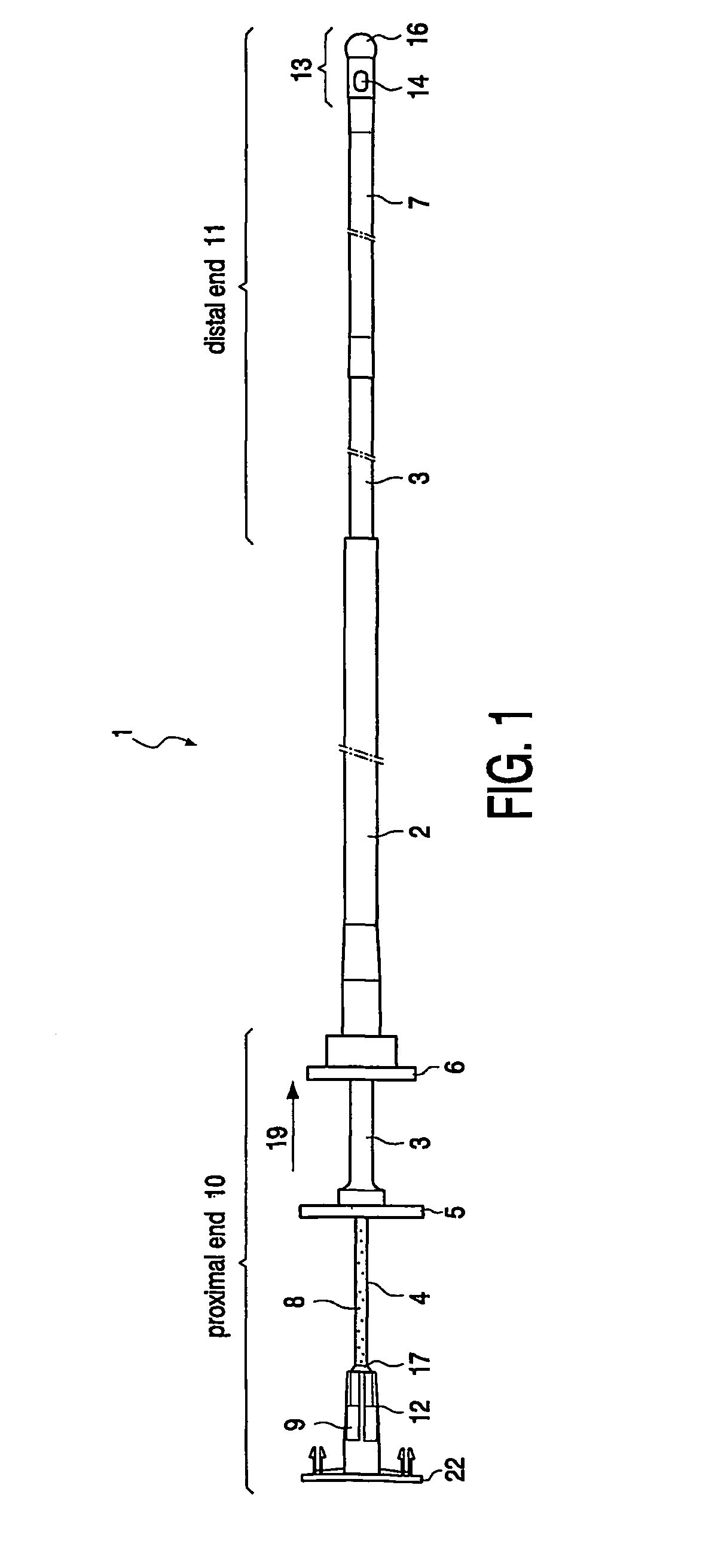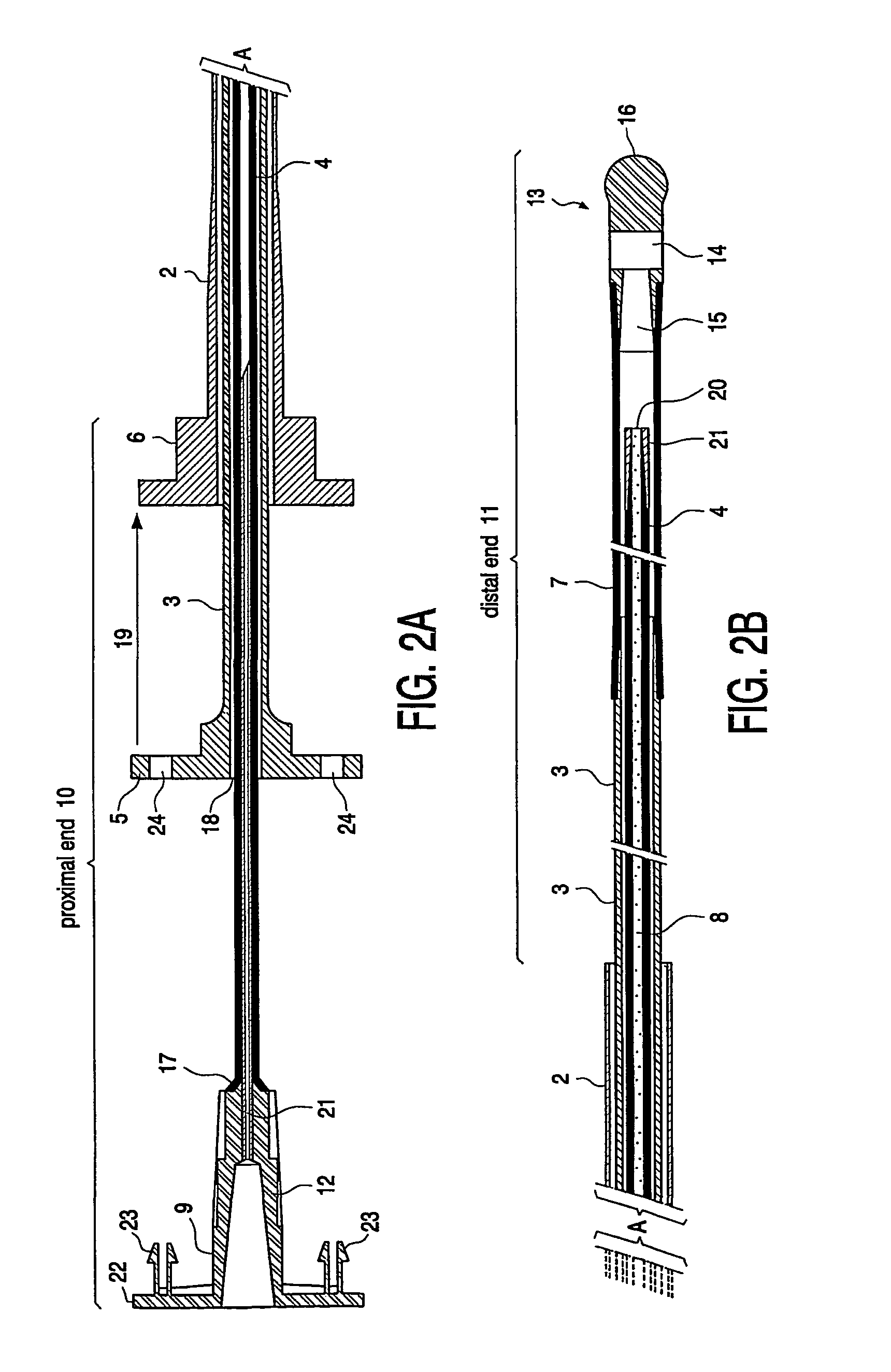Device and method for artificial insemination of bovines and other animals
a technology for insemination and bovines, which is applied in the field of artificial insemination devices and bovines, can solve the problems of affecting the insemination efficiency and conception rate, and affecting the insemination efficiency and conception success rate, so as to improve the positioning of the distal end, less spoilage, and less spoilage of semen
- Summary
- Abstract
- Description
- Claims
- Application Information
AI Technical Summary
Benefits of technology
Problems solved by technology
Method used
Image
Examples
Embodiment Construction
[0040]The entire artificial insemination assembly 1 comprises three hollow cylindrical open or semi-open tubular elements, which are each axially movable in a sliding motion mounted in one another as shown in FIG. 1. These three elements are: an outer protective and rigid sheath 2 suitable for the penetration of the cervix, an inner sheath 3 and the semen tube 4. The diameter of those three elements is such that the semen tube 4, having the smallest diameter, is axially movable in the inner sheath 3, and the inner sheath 3 is axially movable in the outer sheath 2. The outer sheath 2 has a length which is smaller than the length of the inner sheath 3 and is made out a rigid material suitable for penetrating the cervix.
[0041]The proximal end 10 of the AI device 1 is the end which protrudes out of the bovine during insemination allowing at all times a manipulation of the outer and the inner sheath and of the semen tube at which ends an external manual handling is performed. The distal ...
PUM
 Login to View More
Login to View More Abstract
Description
Claims
Application Information
 Login to View More
Login to View More - R&D
- Intellectual Property
- Life Sciences
- Materials
- Tech Scout
- Unparalleled Data Quality
- Higher Quality Content
- 60% Fewer Hallucinations
Browse by: Latest US Patents, China's latest patents, Technical Efficacy Thesaurus, Application Domain, Technology Topic, Popular Technical Reports.
© 2025 PatSnap. All rights reserved.Legal|Privacy policy|Modern Slavery Act Transparency Statement|Sitemap|About US| Contact US: help@patsnap.com



